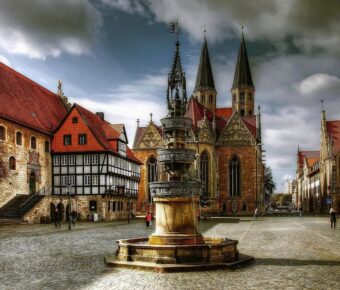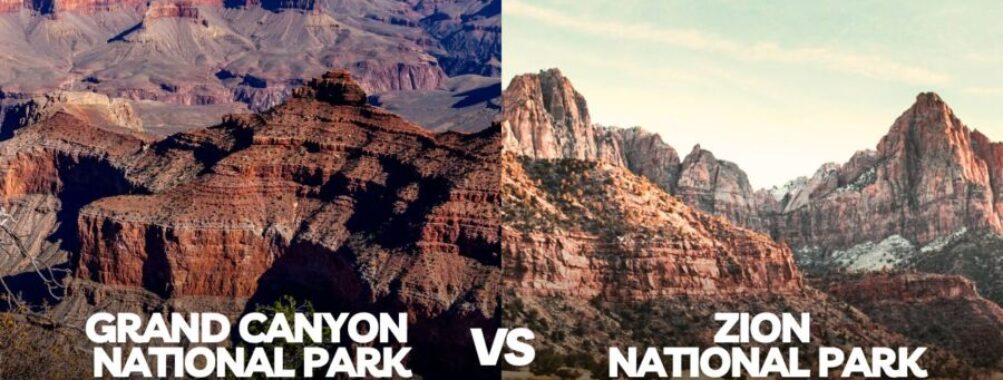
Grand Canyon National Park vs Zion National Park: 7 Stunning Differences to Shape Your Ultimate Southwest Adventure
Are you trying to decide between visiting Zion National Park or Grand Canyon National Park? These iconic destinations offer completely different experiences despite featuring dramatic landscapes carved by natural forces.
The Grand Canyon is nearly nine times larger than Zion and provides classic panoramic views from the rim. At the same time, Zion offers the unique perspective of looking up at towering canyon walls from below. At Zion, you’ll wander through narrow slot canyons and along the Virgin River with red rocks soaring thousands of feet above you.
If you’re seeking solitude, the Grand Canyon’s vast expanse offers more opportunities to escape crowds, especially when backpacking. Both parks feature incredible hiking trails but deliver distinctly different experiences – Zion’s emerald pools and hanging gardens, the Grand Canyon’s mind-boggling depth, and colorful rock layers revealing billions of years of Earth’s history.
Contents
- Geological History and Formation
- Grand Canyon’s Geology
- Zion’s Sandstone Cliffs
- Park Accessibility and Location
- Getting to the Grand Canyon
- Getting to Zion
- Visitor Centers and Facilities
- Grand Canyon Visitor Services
- Zion Visitor Amenities
- Outdoor Activities and Adventures
- Hiking Grand Canyon Trails
- Exploring Zion’s Hiking Terrain
- Camping Experiences
- Natural Attractions and Landmarks
- Grand Canyon’s Majestic Views
- Zion’s Iconic Features
- Environmental Conditions and Best Time to Visit
- Grand Canyon’s Climate and Seasons
- Zion’s Weather Patterns
- Conservation Efforts and Sustainability
- Protecting the Grand Canyon
- Zion’s Environmental Initiatives
- Cultural Significance and Human History
- Indigenous Tribes and Grand Canyon
- Historic Settlements Around Zion
- Planning Your Visit
- Accommodations and Lodging
- Itinerary and Must-See Spots
- Permits, Fees, and Reservations
- Frequently Asked Questions
- What unique features distinguish Zion National Park from the Grand Canyon?
- How does the travel time between Zion and the South Rim of the Grand Canyon impact a combined trip itinerary?
- What advantages does visiting the West Rim offer over the other parts of the Grand Canyon when considering a trip to Zion?
- Is exploring Zion National Park and the Grand Canyon feasible in a single-day trip, and what should visitors consider?
- What advantages does visiting the West Rim offer over the other parts of the Grand Canyon when considering a trip to Zion?
- Is exploring Zion National Park and the Grand Canyon feasible in a single-day trip, and what should visitors consider?
- What are the key factors to consider when choosing between Bryce Canyon and Zion National Park as additional stops from Vegas?
- Which park might offer a more fulfilling experience for those with limited time: Zion National Park or Sedona?
- More Travel Guides
Geological History and Formation
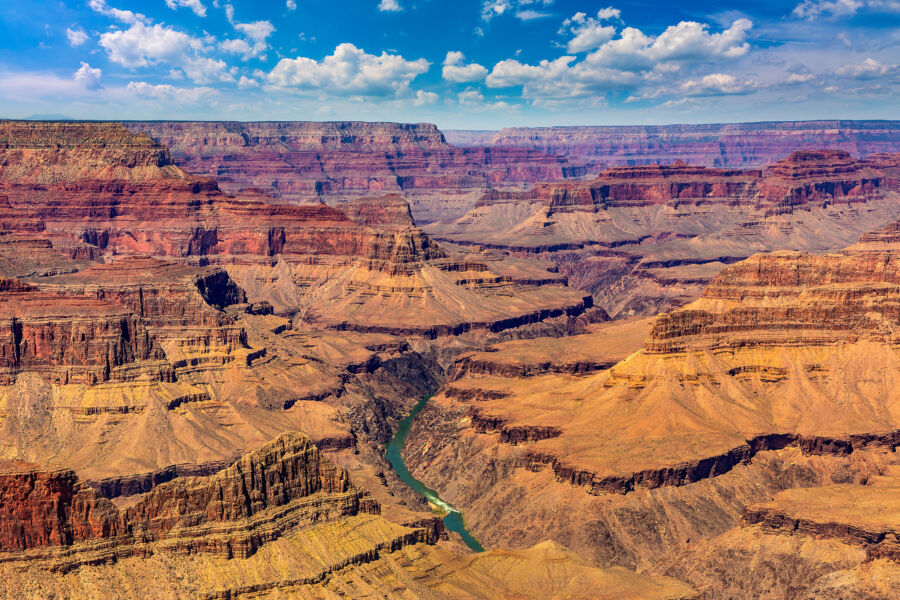
The Grand Canyon and Zion National Park showcase Earth’s geological story chapters. These two stunning landmarks reveal millions of years of history through their distinct rock formations and layers, giving visitors a glimpse into the ancient past of the American Southwest.
Grand Canyon’s Geology
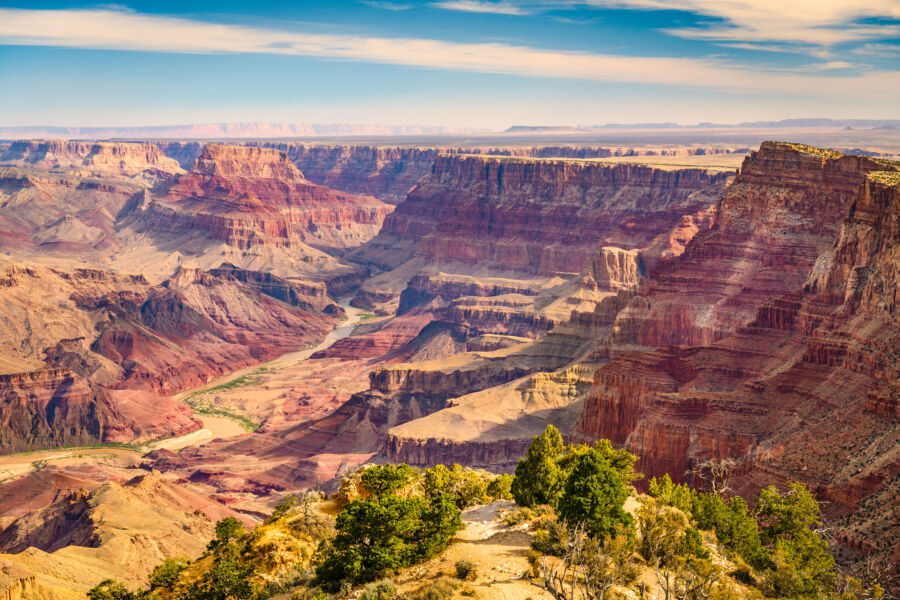
The Grand Canyon tells an incredible story spanning nearly two billion years of Earth’s history. Its oldest rocks in the inner gorge are igneous and metamorphic, formed during Earth’s early days. Above these ancient foundations rest layer upon layer of sedimentary rock, each representing a different period.
What makes the Grand Canyon special is how these layers create a complete geological record. The Colorado River carved through these layers over millions of years, exposing the colorful bands of rock we see today.
The canyon walls display a remarkable timeline – from the 1.7-billion-year-old Vishnu Schist at the bottom to the youngest Kaibab Limestone at the rim, which is “only” 270 million years old. This makes the Grand Canyon a perfect natural laboratory for studying Earth’s history.
Zion’s Sandstone Cliffs
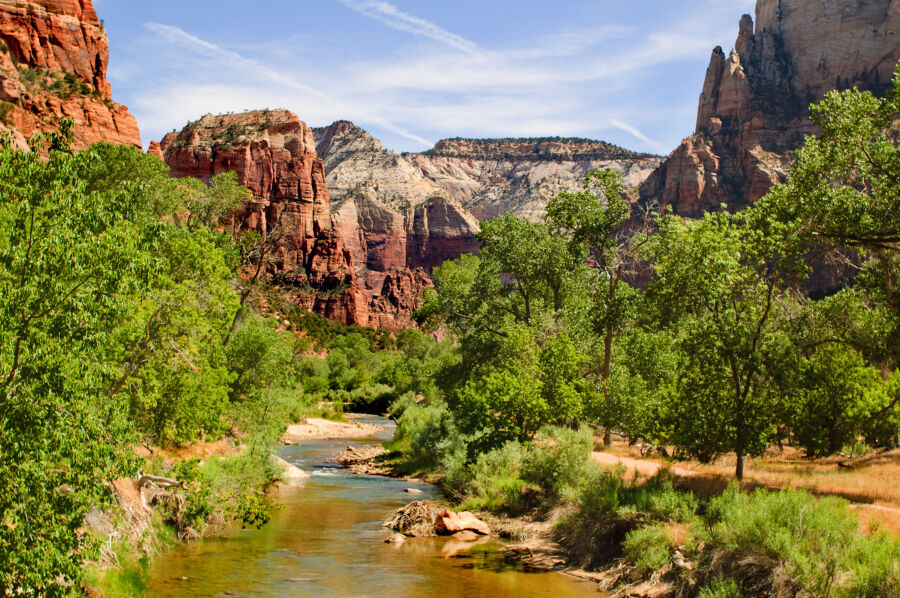
Zion National Park’s towering sandstone cliffs tell a geological story different from the Grand Canyon’s. Interestingly, Zion’s bottom layer of rock is actually the top layer at the Grand Canyon, showing how these parks connect across time.
Zion’s landscape began forming about 240 million years ago when a shallow sea and vast dunes alternately covered the area. These ancient dunes eventually compacted into the massive Navajo Sandstone cliffs that define today’s park – some standing over 2,000 feet tall!
Iron oxide and other minerals created the park’s colorful rock layers, including the prominent cream, pink, and red sandstone. Water remains the key sculptor of Zion’s landscape. The Virgin River carved Zion Canyon, while periodic flash floods continue to shape the park’s narrow slot canyons and unique features, like the famous Narrows.
Park Accessibility and Location
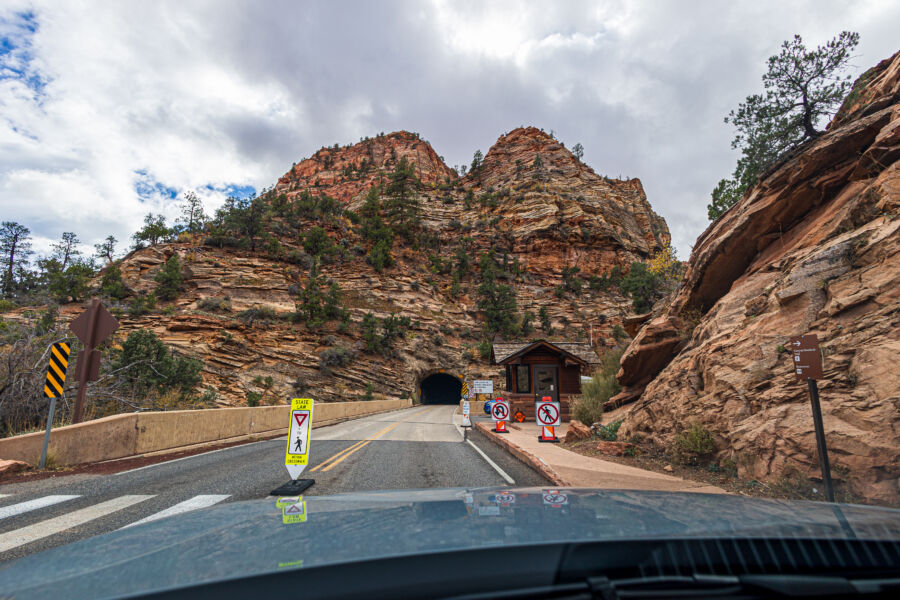
Both parks offer different accessibility options and have distinct locations that impact your travel plans. Getting to these national treasures requires some planning, especially if you’re looking for the most convenient routes or accessible viewpoints.
Getting to the Grand Canyon
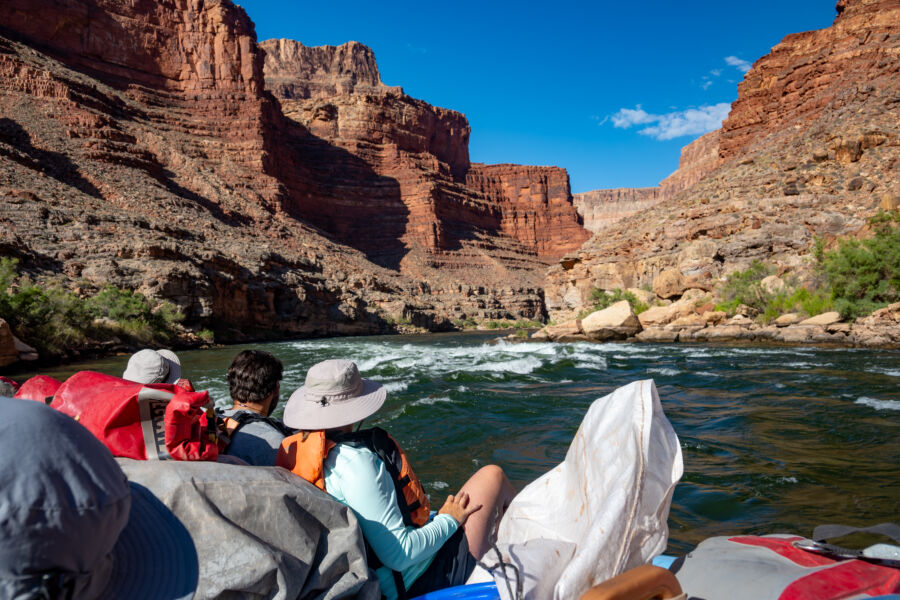
The South Rim of Grand Canyon National Park is the most visited and accessible area. It’s a 4.5-hour drive from Las Vegas, making it a popular road trip option. Unlike the North Rim, which closes during winter months, the South Rim is accessible year-round.
Most visitors fly into Phoenix or Las Vegas and rent a car to reach the park. They can also take a shuttle from Flagstaff or Williams, Arizona.
The Grand Canyon has a free shuttle system operates within the park, connecting various viewpoints and visitor facilities. This is especially helpful for those with mobility challenges.
Many viewpoints along the South Rim have paved wheelchair-accessible paths. The park also offers accessibility permits that allow visitors to drive to certain areas normally closed to private vehicles.
Getting to Zion
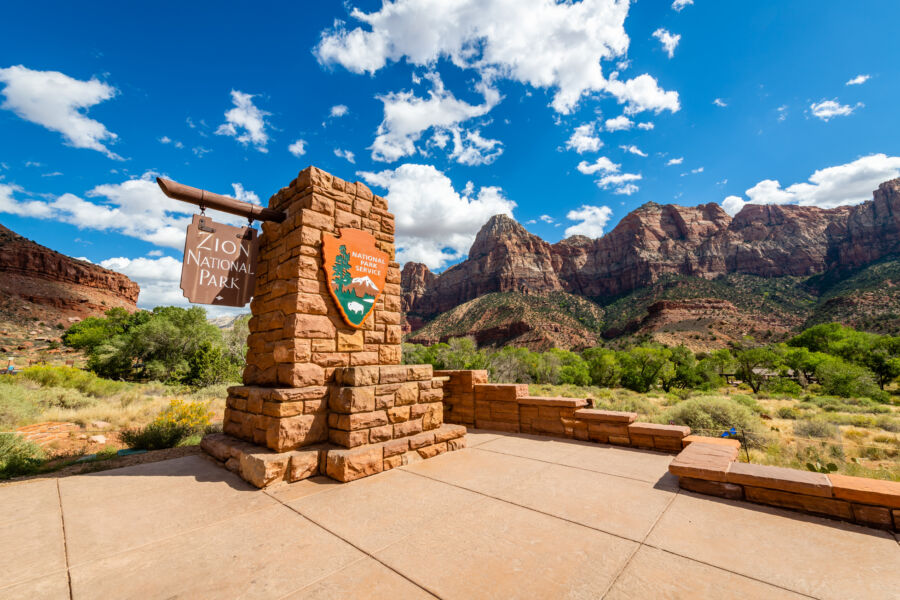
Zion National Park is located near the charming town of Springdale, Utah. It’s just a 2.5-hour drive from Las Vegas, making it a more accessible day trip option for Vegas visitors compared to the Grand Canyon.
During peak season (March through November), personal vehicles aren’t allowed in the main canyon. Instead, Zion operates a highly efficient shuttle system that stops at all major trailheads and attractions.
The shuttle buses are wheelchair accessible, and several of Zion’s key viewpoints can be reached via paved, accessible paths. The Riverside Walk trail is particularly well-known for being wheelchair-friendly.
Springdale is at the park entrance, offering convenient lodging and dining options. Its proximity means you can easily walk or take the town shuttle to the park entrance—no need to worry about parking!
Visitor Centers and Facilities

Both parks offer essential visitor services that enhance your experience. Grand Canyon and Zion facilities provide information, restrooms, and other amenities to make your visit comfortable and educational.
Grand Canyon Visitor Services

The Grand Canyon offers several visitor centers throughout the park. The main South Rim Visitor Center provides exhibits, ranger programs, and trip planning assistance. It’s usually open from 8 a.m. to 5 p.m., though seasons may vary.
The Backcountry Information Center is perfect for a hike or overnight stay in the canyon. It’s open daily from 8 a.m. to noon, and 1 p.m. to 5 p.m. Staff can help with permits and trip planning for both day and extended adventures.
The park also runs a free shuttle system during busy months. These buses connect visitor centers, viewpoints, and trailheads, making getting around without a car easier. The shuttle reduces traffic congestion and is an eco-friendly way to explore the South Rim.
Zion Visitor Amenities
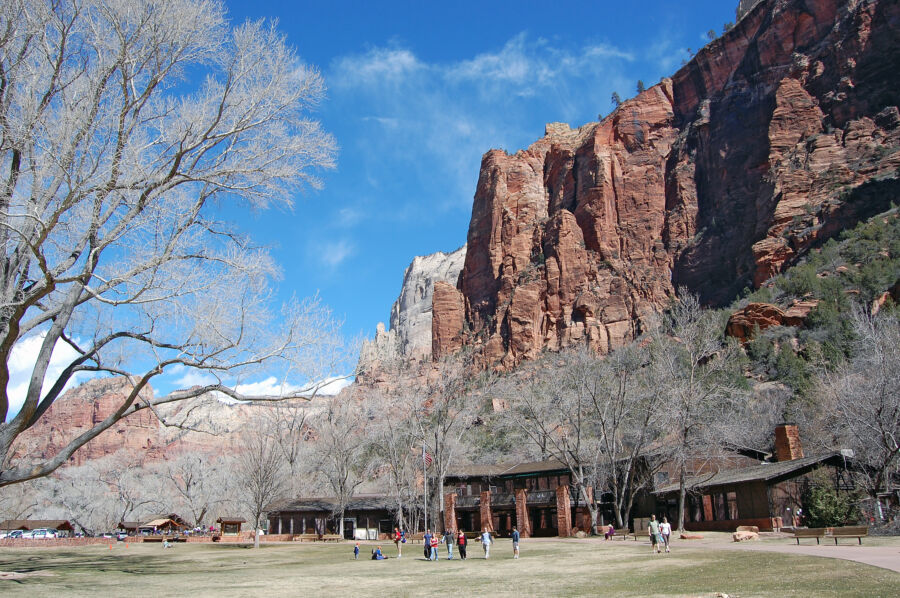
Zion National Park’s main visitor center welcomes guests near the south entrance. It features informative displays, a bookstore, and helpful rangers who can answer questions about trails and conditions.
The park’s shuttle system is a standout feature during peak season. These free buses are often the only way to access popular areas like the Zion Canyon Scenic Drive. The shuttles run frequently throughout the day, stopping at trailheads, picnic areas, and the Zion Lodge.
Zion provides campgrounds, restrooms, and picnic areas throughout the park. Potable water is available at designated stations.
The Human History Museum offers interesting exhibits about the people who have lived in and around Zion throughout history. Many visitors appreciate that Zion’s facilities are concentrated in a smaller area than the Grand Canyon, making them easier to access during a shorter visit.
See Related: Grand Canyon National Park vs Yosemite National Park: Stunning Differences Every Nature Lover Should Know
Outdoor Activities and Adventures
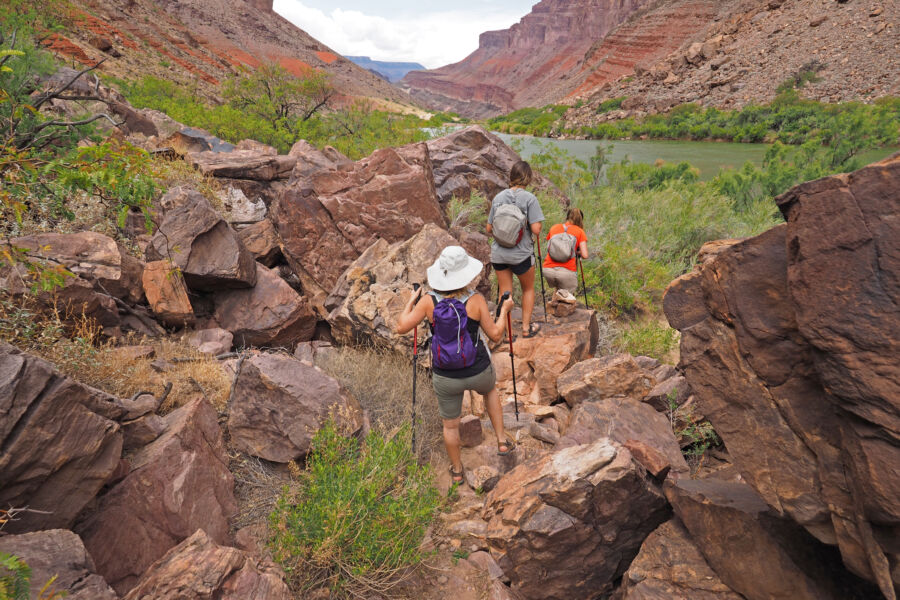
Both parks offer incredible adventures for outdoor enthusiasts. The Grand Canyon and Zion provide distinctive experiences shaped by their unique landscapes, from rim-to-river hikes to slot canyon explorations.
Hiking Grand Canyon Trails

The Grand Canyon’s trail system offers hikers a chance to journey from rim to river—an experience unlike any other in America’s park system. The popular Bright Angel Trail descends gradually and has rest houses and water stations, making it ideal for day hikers.
For more experienced adventurers, the South Kaibab Trail provides spectacular views but lacks shade and water. It’s steeper but more direct.
Remember that hiking down is optional, but hiking back up is mandatory! The temperature rises about 5.5°F for every 1,000 feet you descend, making the canyon bottom often 20°F warmer than the rim.
Many hikers underestimate the difficulty of Grand Canyon trails. Park rangers rescue hundreds of unprepared hikers annually. Always carry plenty of water and salty snacks, and know your limits.
Exploring Zion’s Hiking Terrain
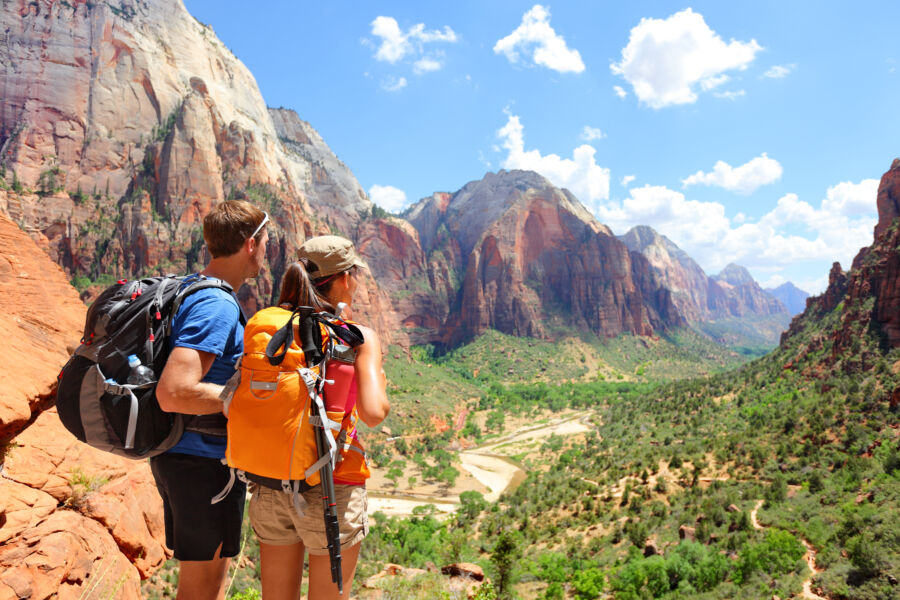
Zion offers dramatic hikes that put you right amid towering canyon walls. Angel’s Landing, perhaps the park’s most famous trail, challenges hikers with its narrow ridge and chain-assisted sections before rewarding them with breathtaking views.
The Narrows invites adventurers to wade through the Virgin River between canyon walls that soar 1,000 feet above. This unique bottom-up perspective makes you feel tiny amid nature’s grandeur.
During summer, the Virgin River provides welcome cooling relief from the desert heat. Proper footwear, such as water shoes or hiking sandals, is essential.
Zion’s hiking options include family-friendly paths like the Riverside Walk and Emerald Pools trails. These gentler routes still showcase the park’s stunning red rock formations and hanging gardens.
Camping Experiences

Camping in either park connects you deeply with their distinct environments. The Grand Canyon’s Desert View and Mather campgrounds offer South Rim stays with expansive stargazing opportunities. North Rim camping provides a more secluded experience but is only open seasonally.
Zion’s Watchman and South campgrounds sit nestled among towering sandstone cliffs. The sound of the Virgin River provides a soothing nighttime soundtrack for campers.
Both parks require reservations well in advance—sometimes 6 months for popular seasons. Backcountry camping permits are available for those seeking more solitude but require proper preparation.
Summer temperatures can be extreme in both parks. Zion’s canyon floor offers more shade, while Grand Canyon campers should prepare for scorching daytime heat and surprisingly chilly nights.
Natural Attractions and Landmarks

Both parks offer breathtaking natural features that draw millions of visitors each year. The Grand Canyon’s vast scale and colorful rock layers amaze, while Zion captivates with towering sandstone cliffs and unique slot canyons.
Grand Canyon’s Majestic Views
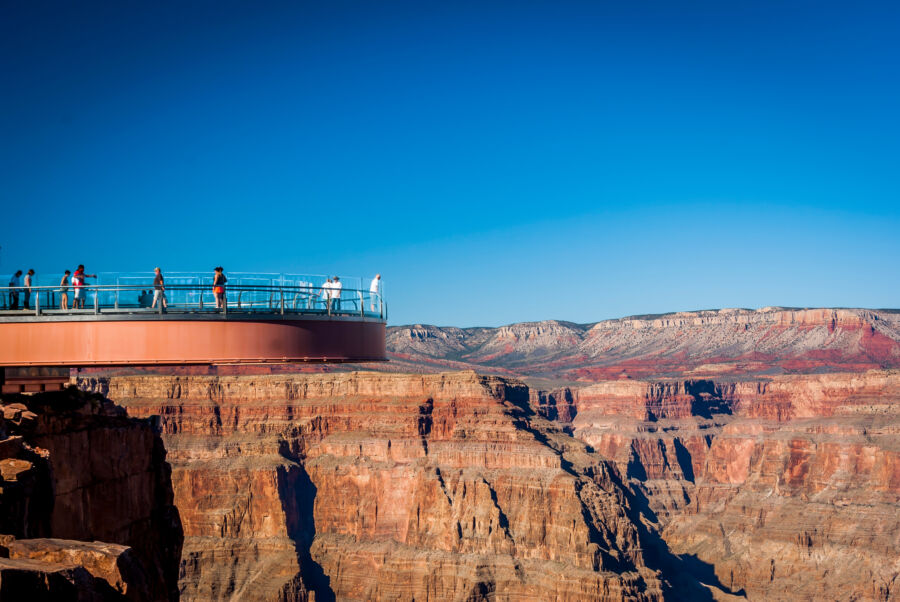
The Grand Canyon’s most impressive feature is its sheer size – about 277 miles long, up to 18 miles wide, and over a mile deep. The Colorado River carved this massive gorge over millions of years, exposing colorful rock layers that tell Earth’s geological story.
Visitors can experience the canyon from both the North and South Rims. The South Rim offers the most accessible viewpoints, like Mather Point and Desert View, which provide the classic panoramas you’ve seen in photos.
The North Rim sits about 1,000 feet higher and has fewer crowds. It’s closed in winter but offers unique perspectives like Bright Angel Point.
The canyon also boasts amazing dark skies for stargazing, far from city lights. Many don’t realize the park contains fascinating rock formations similar to the hoodoos found nearby Bryce Canyon, especially visible along certain trails.
Zion’s Iconic Features

Zion’s landscape feels more intimate, with visitors exploring from the canyon floor and looking at 2,000-foot sandstone walls. The Virgin River created this stunning canyon, carving through colorful Navajo Sandstone.
Angel’s Landing might be Zion’s most famous trail. It is a heart-pounding climb up a narrow ridge with chain handrails and 1,000-foot dropoffs on both sides. The rewarding views make it worthwhile for those without a fear of heights.
The Narrows offers a different experience. Hikers wade through the Virgin River between towering canyon walls that narrow to just 20-30 feet wide in places. The play of light on the red rock walls creates an otherworldly atmosphere.
Zion also features unique formations like Checkerboard Mesa, the Court of the Patriarchs, and the Watchman. The park’s relatively isolated location provides excellent stargazing opportunities, with programs often available during summer.
Environmental Conditions and Best Time to Visit

Both parks offer dramatically different experiences depending on when you visit. Weather plays a huge role in planning your trip, affecting everything from crowd levels to which trails are accessible.
Grand Canyon’s Climate and Seasons

The Grand Canyon experiences distinct seasons with significant temperature variations between the rim and the canyon floor. At the South Rim (7,000 feet elevation), summer temperatures typically range from 50-85°F, while the canyon bottom can scorch at 100-110°F. Winter brings snow to the rims, with the South Rim remaining open year-round despite occasional road closures.
Spring (April- May) and fall (September- October) offer the most pleasant weather for hiking and sightseeing. These shoulder seasons bring mild temperatures, fewer crowds, and spectacular lighting for photography.
Flash floods can occur during the summer monsoon (July-September), making some trails dangerous. Winter visitors should prepare for icy conditions, especially on trails descending into the canyon.
Zion’s Weather Patterns
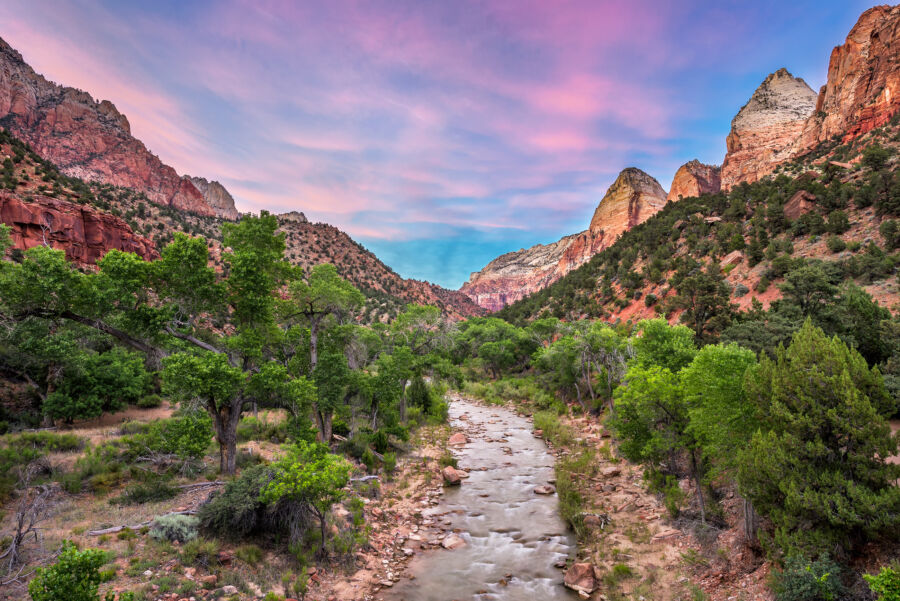
Zion’s unique canyon geography creates micro-climates throughout the park. Summer days (June-August) often exceed 90-100°F in the main canyon, making early morning or evening hikes advisable. This is when Zion is at its most lush and green, with flowing water features at their peak.
Spring (April-May) brings moderate temperatures and blooming wildflowers, though occasional flooding can restrict access to popular spots like The Narrows. Fall (September-October) offers stable weather, comfortable hiking conditions, and smaller crowds.
Winter in Zion (November-March) ranges from 30-60°F with occasional snow at higher elevations. Though quieter, some trails may be icy or closed. Visitors should avoid slot canyons during thunderstorm seasons, as flash floods can occur rapidly with little warning.
See Related: Zion National Park vs Bryce Canyon National Park: Key Differences to Plan Your Ultimate Utah Adventure
Conservation Efforts and Sustainability
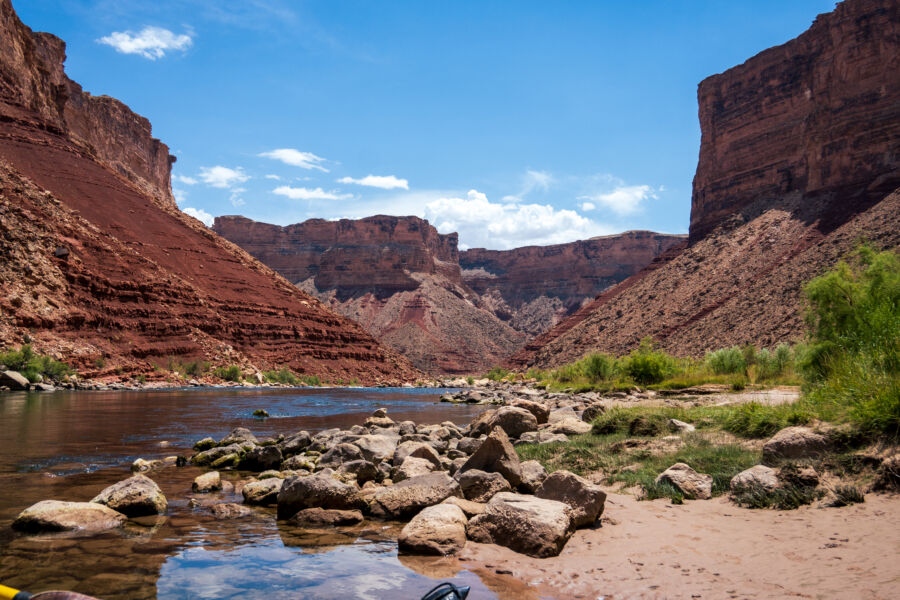
The Grand Canyon and Zion National Parks face environmental challenges that have prompted extensive conservation initiatives. These iconic landscapes require careful management to balance visitor access with ecological protection.
Protecting the Grand Canyon
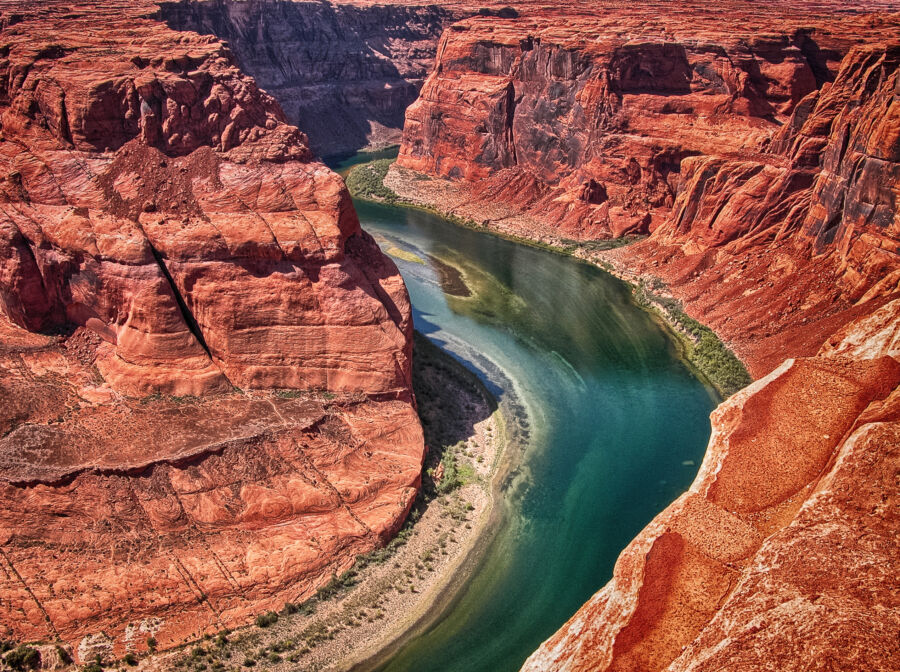
The Grand Canyon faces unique challenges, including water resource management related to the Colorado River system. Glen Canyon Dam and Lake Powell significantly impact water flow through the canyon, affecting wildlife habitats and the iconic landscape.
Park officials work to minimize air pollution that can diminish the visibility of the canyon’s remarkable vistas. They’ve also implemented measures to reduce light pollution, preserving the park’s exceptional stargazing opportunities.
Non-native plant and animal species constantly threaten the Grand Canyon’s delicate ecosystem. Rangers actively remove invasive species while working to restore native plant communities throughout the park.
The National Park Service also collaborates with Indigenous tribes with ancestral connections to the land, incorporating traditional ecological knowledge into conservation practices.
Zion’s Environmental Initiatives
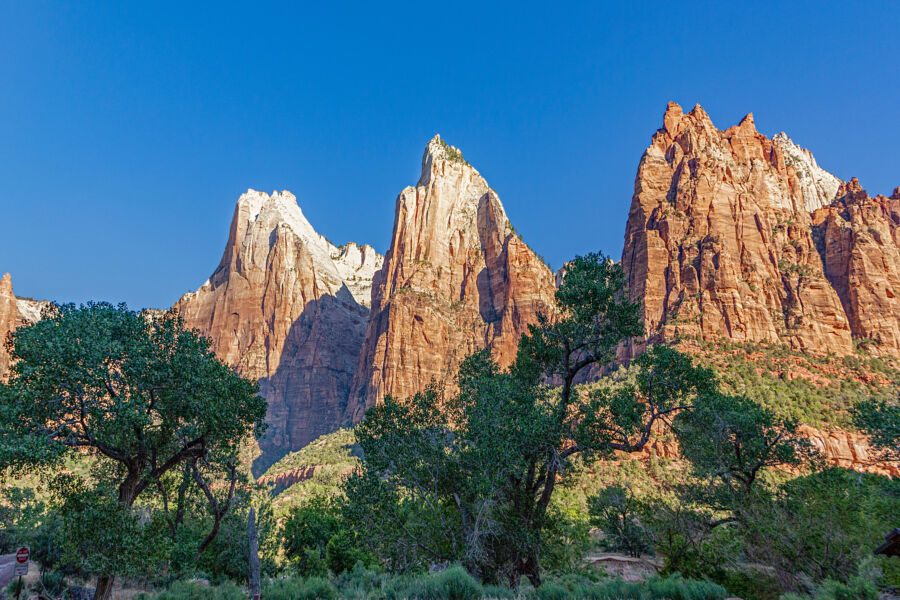
Zion National Park has emerged as a leader in sustainability among America’s national parks. The park has developed an impressive transportation system that reduces carbon emissions by limiting private vehicles within the canyon.
Park management continually seeks to “green” their fleet and decrease their carbon footprint. These efforts extend beyond park boundaries through community partnerships that promote sustainable practices in surrounding areas.
The recent East Zion Initiative aims to conserve thousands of acres through conservation easements. This forward-thinking program protects natural spaces and addresses over-tourism by developing a new visitor center and trail system.
Zion’s approach balances preservation with access, using innovative solutions that protect the park’s stunning red rock formations while allowing visitors to experience them responsibly.
Cultural Significance and Human History

The Grand Canyon and Zion National Park hold deep cultural and historical importance. These natural wonders have been home to indigenous peoples for thousands of years and later attracted settlers who shaped the areas we know today.
Indigenous Tribes and Grand Canyon

The Grand Canyon’s human history spans nearly 12,000 years. Several Native American tribes, including the Havasupai, Hualapai, Navajo, and Hopi, have deep spiritual connections to this landscape. The Hopi consider the Canyon their ancestral homeland and believe it’s where their spirits return after death.
These tribes developed unique relationships with the harsh desert environment. They built homes along the rims and within the Canyon walls, creating communities that thrived despite challenging conditions.
Today, the National Park Service works to protect and preserve these cultural histories. Visitors can learn about indigenous perspectives through ranger programs and cultural demonstrations. Some tribal members, like Lyle Belenquah from the Hopi tribe, share their cultural connections to help visitors understand the Canyon’s significance beyond its natural beauty.
Historic Settlements Around Zion

Zion Canyon’s human history is equally fascinating. Mormon pioneers arrived in the 1860s and named the area “Zion,” reflecting their belief that they had found a sanctuary. These early settlers established farms and small communities in and around what would become the national park.
The Virgin River, which carved Zion’s dramatic landscapes, also provided life-sustaining water for these farming communities. Early homesteaders built irrigation systems and adapted to the challenging terrain.
Before European settlement, several indigenous groups, including the Southern Paiute, called this region home. For thousands of years, they harvested native plants and hunted game throughout the canyons.
Many of these historic settlements were preserved when Zion became a national monument in 1909 and later a national park in 1919. Visitors can now explore remnants of pioneer cabins and early infrastructure that tell the story of human perseverance in this striking landscape.
Planning Your Visit

Preparing for a trip to these magnificent parks requires some forethought. Grand Canyon and Zion offer unique experiences that need different preparation approaches, from where you’ll sleep to what trails you’ll conquer.
Accommodations and Lodging

Finding a place to stay near these popular parks can be tricky, especially during peak season (May-September). Both parks offer in-park lodging, but these spots fill up fast!
At Grand Canyon, El Tovar Hotel and Bright Angel Lodge sit on the South Rim, offering incredible views. Book these 6+ months ahead! For budget options, Mather Campground has tent sites for around $18-25 per night.
Zion offers Zion Lodge within the park – it’s the only in-park hotel option and books up nearly a year in advance. The campgrounds (Watchman and South) are fantastic alternatives, with sites around $20-30 nightly.
Many visitors stay in nearby Springdale, which has hotels at various prices just minutes from the park entrance. Don’t forget about glamping options near both parks if you want a unique experience without roughing it completely!
Itinerary and Must-See Spots

Plan at least 2-3 days to see the highlights of the Grand Canyon. The South Rim’s viewpoints, like Mather Point and Yavapai Observation Station, offer jaw-dropping vistas with minimal hiking. If you’re fit and prepared, hiking even part of Bright Angel Trail gives you a taste of the inner canyon.
Zion requires a different approach. Most visitors need 2-4 days to experience the best trails. Angel’s Landing (permit required) and The Narrows are bucket-list hikes that shouldn’t be missed. The Riverside Walk is perfect for families and those wanting an easier experience.
Both parks shine at different times of the day. At Grand Canyon, sunrise at Desert View and sunset at Hopi Point create unforgettable memories. In Zion, early morning at Canyon Overlook Trail offers gorgeous light and fewer crowds.
Consider visiting during the shoulder seasons (April-May or September-October), when the weather is pleasant and the crowds are thinner.
Permits, Fees, and Reservations
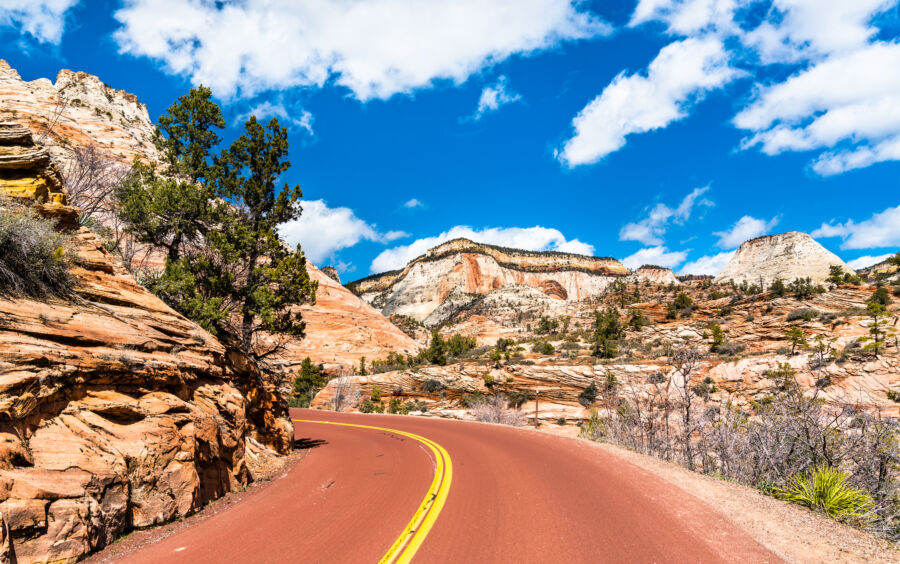
Entry fees for both parks are $35 per vehicle, valid for 7 days. An America the Beautiful Pass ($80) covers both parks for a year and is worth it if you’re visiting multiple national parks.
Zion has more reservation requirements than the Grand Canyon. From March to November, Zion uses a shuttle system for the main canyon, and you cannot drive your vehicle on Zion Canyon Scenic Drive. No reservation is needed for the shuttle itself, but you’ll want to arrive early to avoid long lines.
You must obtain a permit through a lottery system for Angel’s Landing. Applications open quarterly at recreation.gov, and day-before permits are also available. The Narrows sometimes require permits depending on your route.
Grand Canyon’s South Rim doesn’t require timed entry, but if you plan to hike to Phantom Ranch at the bottom, those reservations open 15 months in advance and are extremely competitive.
See Related: Grand Canyon National Park vs Bryce Canyon National Park: Stunning Differences Every Explorer Should Know
Frequently Asked Questions
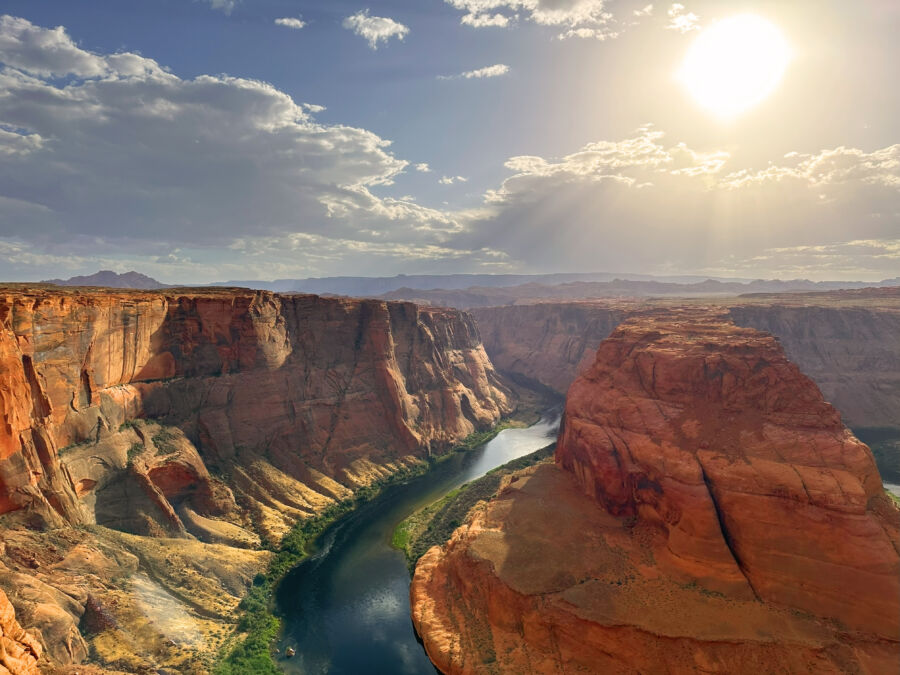
Planning a trip to these amazing national parks involves some tough choices. Many travelers want to know key differences, travel logistics, and how to make the most of their time when visiting these natural wonders.
What unique features distinguish Zion National Park from the Grand Canyon?
Zion offers towering sandstone cliffs that visitors can view from the bottom while looking up, creating an intimate canyon experience. The park features unique hikes like The Narrows (where you walk through water) and Angels Landing with its thrilling chain-assisted climb.
Grand Canyon provides a vastly different experience. Visitors typically stand at the rim, looking down into an enormous chasm. The scale is much grander—the canyon stretches 277 miles long and up to 18 miles wide, while Zion’s main canyon is more compact.
The color palettes differ, too. Grand Canyon displays dramatic red, orange, and purple rock layers spanning billions of geologic history. Zion showcases creamy white and vibrant red Navajo sandstone with incredible detail visible at closer range.
How does the travel time between Zion and the South Rim of the Grand Canyon impact a combined trip itinerary?
The drive between Zion and the South Rim takes about 4.5 hours, covering roughly 240 miles. This significant travel time means combining both parks usually requires at least 3-4 days for a satisfying experience.
Many travelers stay overnight near each park rather than attempting day trips. The South Rim area offers lodging inside the park and nearby towns like Tusayan, while Springdale provides excellent accommodation options outside Zion.
Weather considerations also impact travel time. The South Rim sits at around 7,000 feet elevation, while Zion Canyon is lower at about 4,000 feet. Winter conditions can make the drive between parks more challenging and time-consuming.
What advantages does visiting the West Rim offer over the other parts of the Grand Canyon when considering a trip to Zion?
The West Rim is significantly closer to Zion, requiring only 2-2.5 hours of driving compared to the 4.5 hours to reach the South Rim. This proximity makes it much more feasible for travelers with limited time.
The West Rim features the famous Skywalk glass bridge, providing a unique experience not available in other parts of the canyon. This attraction lets visitors walk over the canyon on a transparent platform for incredible views.
One downside is that the West Rim isn’t part of Grand Canyon National Park but is on Hualapai Tribal land. This means separate entrance fees and a different management system than what visitors experience at the South or North Rims.
Is exploring Zion National Park and the Grand Canyon feasible in a single-day trip, and what should visitors consider?
A single-day trip covering both parks is extremely challenging and not recommended. The 4.5-hour drive between Zion and the South Rim alone would consume most of your day, leaving minimal time for actual exploration.
If attempting this, the West Rim would be the only feasible Grand Canyon option due to its closer proximity to Zion. Even then, visitors would only get a taste of each park’s highlights.
Weather, traffic, and seasonal crowds can further complicate tight scheduling. Many travelers report feeling rushed and disappointed when trying to cram both destinations into a single day.
What advantages does visiting the West Rim offer over the other parts of the Grand Canyon when considering a trip to Zion?
The West Rim is significantly closer to Zion, requiring only 2-2.5 hours of driving compared to the 4.5 hours to reach the South Rim. This proximity makes it much more feasible for travelers with limited time.
The West Rim features the famous Skywalk glass bridge, providing a unique experience not available in other parts of the canyon. This attraction lets visitors walk over the canyon on a transparent platform for incredible views.
One downside is that the West Rim isn’t part of Grand Canyon National Park but is on Hualapai Tribal land. This means separate entrance fees and a different management system than what visitors experience at the South or North Rims.
Is exploring Zion National Park and the Grand Canyon feasible in a single-day trip, and what should visitors consider?
A single-day trip covering both parks is extremely challenging and not recommended. The 4.5-hour drive between Zion and the South Rim alone would consume most of your day, leaving minimal time for actual exploration.
If attempting this, the West Rim would be the only feasible Grand Canyon option due to its closer proximity to Zion. Even then, visitors would only get a taste of each park’s highlights.
Weather, traffic, and seasonal crowds can further complicate tight scheduling. Many travelers report feeling rushed and disappointed when trying to cram both destinations into a single day.
What are the key factors to consider when choosing between Bryce Canyon and Zion National Park as additional stops from Vegas?
Distance is a primary consideration – Zion is about 2.5 hours from Las Vegas, while Bryce requires an additional 1.5 hours beyond Zion. This makes Zion more accessible for shorter trips.
The experiences differ dramatically. In an amphitheater setting, Bryce showcases thousands of otherworldly hoodoos (tall, thin spires of rock). Zion offers massive canyon walls, riverside walks, and diverse hiking opportunities.
Season matters significantly in this decision. Bryce sits at a much higher elevation (8,000-9,000 feet) and often has snow from October through May. Zion’s lower elevation provides more moderate temperatures and accessibility year-round.
Which park might offer a more fulfilling experience for those with limited time: Zion National Park or Sedona?
Zion provides a more concentrated national park experience with marked trails, shuttle systems, and ranger programs. Visitors can accomplish several signature hikes in just one or two days.
Sedona offers a different experience spread across a larger area with numerous smaller trails among its famous red rocks. The town is more developed, with shopping, dining, and spiritual experiences centered around vortex sites.
Accessibility plays a role, too. During peak season, Zion requires shuttle use and can have lengthy lines. Sedona allows more freedom with personal vehicles but can have significant traffic congestion on weekends and holidays.

